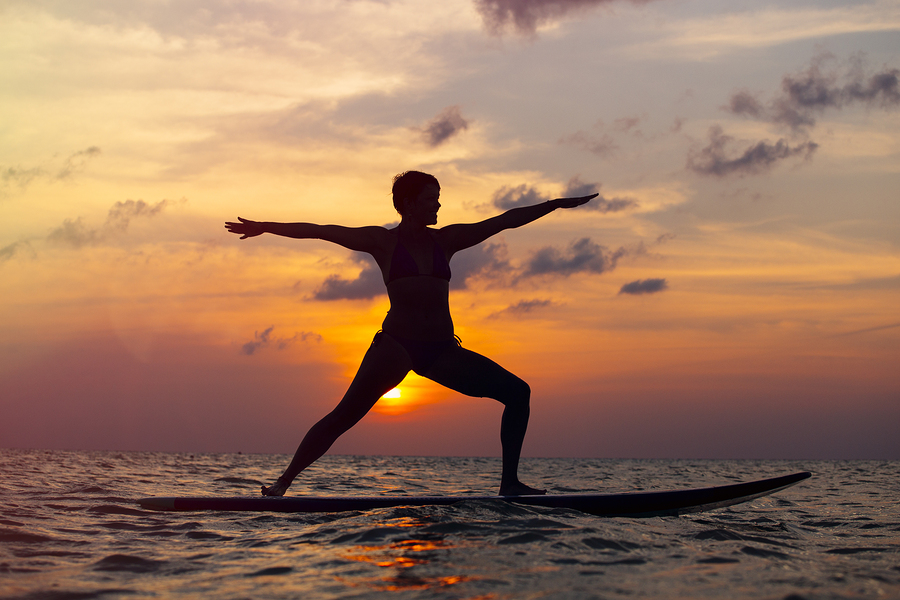Your SUP Stance Is Important
Stand Up Paddle Boarding (SUP) is an awesome workout and a fun way to explore the lakes and rivers in Central Oregon. All you need to enjoy this popular low-impact sport is a board, a paddle, a PFD, and access to water. It’s simple and accessible to many levels of athletic ability.
You want to be thoughtful about your posture when you hop on your paddle board. To get the greatest health benefits and avoid injury or discomfort, there are a few key things to pay attention to when adjusting your stance on your paddle board. We talked with Sue Fox who leads the Stand Up Paddle Boarding program at Tumalo Creek Canoe & Kayak about her recommendations for good, healthy posture on your SUP.
Stay balanced and body gentle.
Stand Up Paddle Boarding is largely about balance, so Sue’s first rule of thumb is to pay attention to your body mechanics and do what feels best. Be kind to your body, not forceful or tense in your movements and posture. While there are a few best practices, every body is different and Sue encourages her students to make the small adjustments they need to feel comfortable.
Pay attention to foot position.
In order to move around on your stand up paddle board, you first need to establish good balance. If you are a beginner or average paddler you are likely spending your time on flat water. In this environment, you’ll want to place your feet in the middle of the paddle board with your feet parallel and at each side of the carry handle. Your toes should point to the tip of the board, not sideways as you would if you were surfing. If you are a more advanced paddler and enjoy stronger current or whitewater, you’ll need a more fluid stance and your feet will likely turn sideways.
Keep a best athletic stance.
The same mechanics hold true for Stand Up Paddle Boarding as with many other athletic activities. You want to make sure your feet are hip-width apart, your head and shoulders are relaxed, you have a slight bend at the knee, and your core is engaged. Keep your gaze at the horizon, not down at your toes.
Loose hips, no flips.
Much like kayaking, keeping loose hips is key to keeping your balance and staying on your board, not in the water. Once you’ve established balance, practice wiggling your hips slightly from side to side. Feel how stable you are when your hips are loose as opposed to tense. Don’t be afraid to move your hips while you move across the water.
Feel like you’re about to fall? Lift the eyes.
At some point you might feel like you are about to fall off your paddle board. Sue reminds her students that your body goes where your eyes go. So, when you get that sudden “oh no, I’m about to fall!” feeling, lift the eyes instead of looking down. You can also place your paddle perpendicular into the water like a tripod to help gain stability. Or, bend your knees and gently kneel to lower your center of gravity.
Interested in learning more about achieving your healthiest SUP stance? Sign up for the Basic Skills Stand Up Paddle Board class at Tumalo Creek Canoe & Kayak this fall. Sue Fox will lead you through the basic skills you need to have a great workout and a great time on the water.
Also important: Keep your body and balance strong for your SUP adventures by incorporating chiropractic care and massage at Total Body Chiropractic & Massage in Bend, Oregon. Whether you are working through an injury, dealing with joint pain, or looking for a practitioner to help you maintain optimal health, we can help you be your best self on and off your paddle board.

